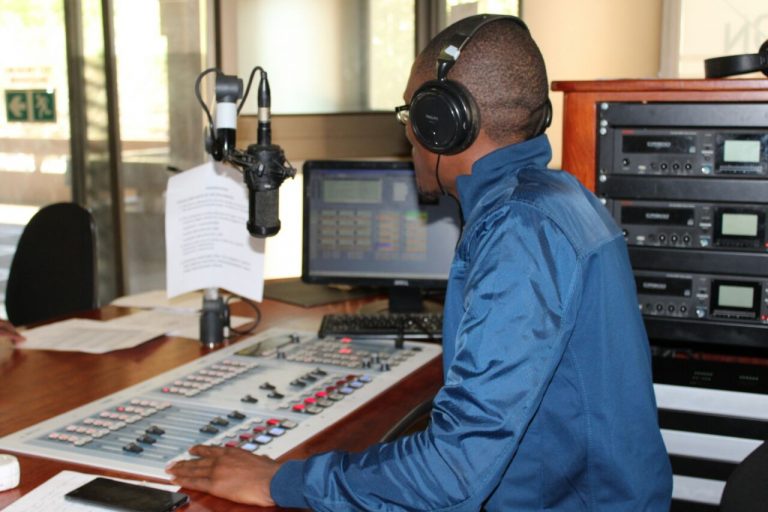Why Local Radio Must be in Your Music Promotion Strategy

Instead of agonising over a big station not playing your song, start targeting campus-community stations, writes Ace Moloi
With digital technologies and the instant access to audiences they come with, the relevance of radio for music marketing is often in question. But by now we must have conceded, even if begrudgingly, that radio ain’t goin’ nowhere. An average upcoming artist has a lot of intelligent things to say about radio dying until their song is playlisted and they flood the timeline with essays. Even people’s perceptions of an emerging artist change as soon as they hear their song on the radio.
Writing for The Conversation, University of Cape Town’s Professor Tanja Bosch states that despite the rise in digital technologies, radio listenership keeps growing in its role as a source of infotainment. This means that radio is still an important feature in marketing strategy, regardless of our “radio is dead” rhetoric when we’ve just signed up for home Wi-Fi and can now stream all four hours of David Mashabela’s podcast interviews.
South Africa has 40 commercial and public broadcasting stations (PBS) combined. It also has over 280 community radio stations, a number that is inclusive of campus-based platforms.
This article specifically focuses not just on radio but community radio as a platform for music marketing. The piece acknowledges the fact that in some areas, campus and community radio stations behave the same, with little if any distinctive features. However, that’s somewhat tangential here. The central point is that targeting local stations gives artists and their marketing teams access to pockets of organised audiences which, if leveraged sufficiently, can result in a successful campaign, sales, streams as well as a mention in music conversations.
I volunteered as a student radio presenter at Kovsie FM, a campus radio station, some 10 years ago. At the time, the station had tens of thousands of listeners around Mangaung and being on its frequency was magnetic of all good things in life. As years went by, CUT FM went live, becoming the coolest space for urban youth. As these developments unfolded, Motheo FM was also growing in its influence as the voice of the district, despite its well-documented challenges.
Even though at some point in my life I did radio on a national SABC scale, I still am a very loud cheerleader of campus-community radio and believe that it plays – or can play – a crucial role in popularising new music. For instance, I have heard more Stinno Le Thwenny songs on local radio than I could possibly ever do elsewhere.
This is not a view I share alone, at least here in Mangaung. Kovsie FM’s programming manager and OFM presenter-producer, JayBee Makhalemele, tells me, “There by community/campus radio, less ads and paid for content results in more music. We might not hear you on Lesedi FM, but we will hear you on Dihlabeng FM or QwaQwa Radio. The business of music is lost to many artists, which cripples them in a way only realised later. There’s a reason even national artists still do community/campus interviews.”
Contrary to many big stations, campus-community offer an easy to define audience, which also helps with marketing your work as an artist. They are not “a big church”, to steal from the ANC’s ideological bio. So, rather than “having everything for everyone” like PBS, campus stations in particular give you an idea of who heard your song and what they listen to.
For example, Kovsie FM’s targeted listener (Alex is her name) is a young woman who drives her own economical car, goes to 2nd Avenue for fun (most likely Chicago now), is technologically savvy, and would rather order in than cook. Therefore, if Alex hears your song on her favourite station and vibes with it, she will take the following actions: Shazam it, add it to her cool Spotify playlist, use it on her reels and stories, recommend it to her music tribe.
With bigger public broadcasting stations that are dominated by rural and much older populations, the relationship a listener has with your song does not always go beyond the radio station as the average listener of such a station may not be technologically savvy. Or the presenter will speak over the song shamelessly for over a minute. Or play it a few seconds before going to the news.
In any case, smaller radio stations appreciate it when you pitch your music to their stations. There is a certain feeling of being seen to it, because often times their playlists are taken off YouTube. So, if your product is good, they will most certainly playlist and break it into the market long before bigger stations catch up (self-interest!). This is not a thumb-sucked view. According to Motheo FM station manager, Lebogang Matolong, campus-community is the most authentic yardstick to measure an artist’s reach.
“Campus and community radio stations are forces on the ground. It takes a lot of digging and planning for one to cement this thought in a lot of our artistic practitioners. Mainstream radio [stations], PBS and commercial, are no longer in the business of breaking new hits. They play what’s already hot in the market and the sad part is that most of the songs they list are hits made by campus and community radio,” he claims.
So, instead of agonising over a big station not playing your song, start targeting small community stations that are gunning for the same listenership as the big player. And when you’re playlisted, be thankful and publicise it. Don’t wait to be playlisted by radio stations you think matter; every radio spin is a blessing when you know how hard you’ve worked for the music. To repeat JayBee’s words, there’s a reason why big artists hardly leave a city without their managers securing them an interview on local radio.